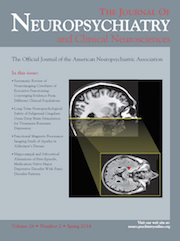Iatrogenic Zolpidem Dependence
To the Editor: Iatrogenic benzodiazepine abuse is emerging as a common mental health problem in neuro-psychiatric practice. Zolpidem, which selectively binds to γ-aminobutyric acid type A (GABA-A) receptors, was launched for the treatment of insomnia with the hope that it produces no dependence. However, animal studies,1 reviews,2 and case reports3,4 demonstrate that zolpidem can result in tolerance and dependence. We report a case of bipolar mood disorder with iatrogenic zolpidem dependence.
Case report
A 48-year-old self-employed woman who was brought in with complaint of taking 400‒500 mg zolpidem daily for last 15 months. She had a history of bipolar affective disorder for the last 10 years (one episode of mania and two episodes of major depression). The last episode of major depressive disorder was 15 months ago at which time she had developed excessive irritability, reduced appetite, hopelessness, worthlessness, sad mood, and suicidal ideation. She was started on tablet escitalopram (10 mg/day), divalproex sodium (1 gm/day), and zolpidem (10 mg/day). Complete remission was attained in 3 months. After 6 months, she stopped the medication on her own. There was no recurrence of symptoms except for insomnia, for which she continued zolpidem. There was an increased need for zolpidem and, over a period of 3 months, she was using up to 200 mg zolpidem per day. She started having forgetfulness and was not able to keep accounts and remember phone numbers. She started taking zolpidem during day time hours as there was restlessness after 3 hours of intake. Over the next 3 months, consumption increased to 400–500 mg/day. There was a marked deterioration in memory, and she used to spend a lot of time searching for her keys, diary, purse, and jewelry. She also developed marked irritability, sad mood, and guilty feelings, which exacerbated when her husband and only son started avoiding her. She was brought in for the treatment of zolpidem dependence. There was no other significant past history. Her routine laboratory investigations were within normal limits. After a detailed evaluation, she was started on 30 mg mirtazapine and counseling. On her 8-week follow-up, there was remission of sad mood and decreased zolpidem intake.
Discussion
This case highlights the development of zolpidem tolerance and dependence. Individuals most at risk had a history of substance abuse or dependence and psychiatric comorbidities.2 The present case had a history of bipolar mood disorder. Dose self-escalation, as was seen in the present case, can result in tolerance to the hypnotic and sedative effects of zolpidem. Patients develop nausea, fatigue, amnesia, euphoria, hallucinations, increased appetite, and changes in libido. The present case had only mild drowsiness and marked amnesia. Discontinuation syndrome included fatigue, nausea, flushing, tachypnea, panic attacks, abdominal discomfort, uncontrolled crying, emesis, delirium,2,3 and withdrawal seizures.4 The present case had only restlessness and craving. Long-acting benzodiazepines and fluoxetine had been used in the treatment of zolpidem dependence,4 but mirtazapine was successfully used. The present study highlights the problem of iatrogenic zolpidem dependence and suggests a cautious approach in following guidelines for treatment of insomnia independently in a depressed patient.5
1 : Zolpidem behavioral pharmacology in baboons: self-injection, discrimination, tolerance and withdrawal. J Pharmacol Exp Ther 1992; 260:1199–1208Medline, Google Scholar
2 : Evidence of zolpidem abuse and dependence: results of the French Centre for Evaluation and Information on Pharmacodependence (CEIP) network survey. Br J Clin Pharmacol 2007; 64:198–209Crossref, Medline, Google Scholar
3 : Zolpidem dependence, withdrawal seizure and comorbidity following different outcomes: two case reports and a review of the literature. J Med Sci 2008; 28:263–267Google Scholar
4 : Zolpidem dependence in a geriatric patient: a case report. J Am Geriatr Soc 2009; 57:1962–1963Crossref, Medline, Google Scholar
5 : Improved insomnia symptoms and sleep-related next-day functioning in patients with comorbid major depressive disorder and insomnia following concomitant zolpidem extended-release 12.5 mg and escitalopram treatment: a randomized controlled trial. J Clin Psychiatry 2011; 72:914–928Crossref, Medline, Google Scholar



